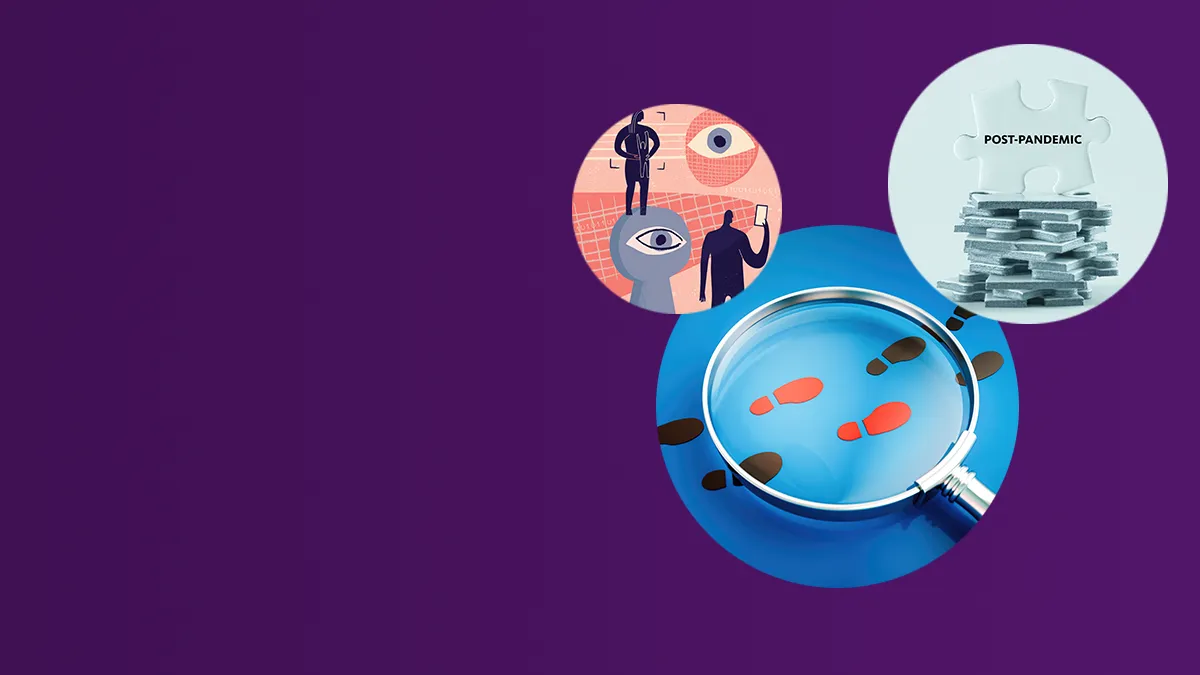
- Ransomware
- 8 min read

Everything we do leaves an online digital footprint, both intentionally and unintentionally. The online data we generate can tell interested third parties a lot about an individual and can lead to targeted actions towards you, such as specific social media ads and, more nefariously, social engineering attacks.

Today, your digital data includes things such as your social media accounts, biometric data, usernames, passwords, likes, dislikes, private family information and location data. And that is not all! When you post reviews and thoughts online, this can also be used to build out your digital profile by pinpointing your interests, political beliefs, and societal opinions. All this digital data is being freely shared online by individuals and are extremely easy for others to access and use for their own means.
For instance, according to the Privacy Rights Clearinghouse, there are 540 data brokers operating in the US alone. Whilst many of these data brokers are leveraging your information for marketing purposes and targeted ads, we also need to be aware of cybercriminals looking to exploit you with identity theft, phishing scams, and fraud. Cyber criminals can use your digital footprint to skewer your online accounts and gain access to sensitive information. Unfortunately, if your online accounts are breached by hackers, you will spend more time cleaning up the mess than you realise.
There are two main types of digital footprints when on online. The first is an ‘active’ digital footprint. An active digital footprint is a record of data that you post intentionally. This includes items such as emails, social media updates, blogs, and more.
The second type of digital footprint is a ‘passive’ footprint. This is formed from data that an individual leaves online unintentionally. For example, when you visit a website, cookies are stored which record what you have been looking at, or when a browser collects your browsing history.

There are a few people who are tracking online digital footprints. The first are the marketing arms of companies looking to build profiles on potential customers to better target their promotional pieces and adverts.
The second is your employer or potential employer, who may be using your digital profile to make decisions on hiring, promotions, and HR cases. A recent study by Career Builder showed that 70 percent of employers use social media to screen candidates during the hiring process, making your online image especially important.
And the third are cybercriminals looking for sensitive data that can give them access to your finances, confidential systems, and accounts with the intention of committing identity theft.
We are particularly concerned about how cybercriminals are exploiting digital footprints.

The World Economic Forum asked 350 of the world’s top risk experts to outline the most concerning risks for a post-COVID-19 world … 50% said they were worried about an increase in cybercrime.
Due to the pandemic, more data has moved online. Work, education, and more social interactions take place in the cyber space. Abine data reveals that the number of personally identifiable data per individual online has jumped by 150% over the last two years. Abine attributes this to two things: increased data broker activity and increased pandemic-influenced online/screen time.
As a global population, we are also over-sharing post-pandemic. Twitter sees more than 6,000 tweets per second, many of which are brimming with a lot of information about the individual posting. Furthermore, most social networks geo-locate your status updates. Many people are unaware of this setting and could be revealing multiple sensitive locations without realising it. For example, a cybercriminal could scroll through your social feed and find tweets about work coming from a specific location, not only compromising where you are but also your employer.
A true indication of the pandemic’s affect on digital footprints and cybersecurity is the rapid growth of digital businesses and the subsequent consequences. Online banking has seen a 200% increase in new registrations. Online shopping accounts have skyrocketed by 259% over last year. In fact, according to TechCrunch, the pandemic has accelerated growth for e-commerce industry, squashing five years of advancement into a single year.
The sudden surge in digital business has put a strain on the cybersecurity infrastructure. Before the pandemic, many businesses were already operating under inadequate cybersecurity protocols. Now, the situation is even worse as many businesses are either now all-digital or certainly heading that way.
In a Ponemon Institute study, over half of C-level respondents said their organisation currently lacks the capacity to fully measure the cyber hygiene of their enlarged digital footprint.
Generating large data silos of consumer information has gotten easier in recent years because of advances in A.I (Artificial Intelligence). Artificial intelligence technology allows for more accurate and faster data analysis. Through data analysis and social media scraping, cyber criminals
A.I can now help data brokers analyse both online data and public information such as property records, court information, and political affiliation. It can also make conclusions based on your online shopping habits, watch history and browsing data. How can one expect to keep secure tabs on every move you make on the internet?

The ramifications of a cybercriminal stealing your data are massive. If a person’s profile and identity is compromised, it can have a knock-on effect on your financial situation, employment and even housing.
The ITRC (Identity Theft Resource Centre) ran a poll in 2021 and found that 83% of people who have experienced identity theft were unable to rent a flat or find housing. They also reveal that 67% of people also fell behind on bills and faced financial issues because of their data being exploited by cyber criminals. The ITRC reveals that many of the identity theft cases they encountered, stem from digitised data and record. They conclude that identity theft has evolved from mail fraud and stolen HR records to data breaches and phishing scams.
We all spend a lot of time online. We make status updates, share videos, browse forums, and comment sections, use multiple devices, and visit countless websites. All these digital steps leave footprints that can be analysed and used to track your behaviour and data. Even the amount of time you spend online can be used alongside all the aforementioned digital data to form a complete picture of who you are for a cybercriminal.
Understanding what online actions leave a digital footprint and how to minimise your visibility to hackers is something both individuals and organisations must master in the modern age.
TSC (The Security Company) offers a library of resources to train and educate your workforce on the importance of digital footprint management and how one can stay safe and secure when online.
If you would like more information about how The Security Company can help your security culture and raise awareness levels, please contact Jenny Mandley.



© The Security Company (International) Limited 2025
Office One, 1 Coldbath Square, London, EC1R 5HL, UK
Company registration No: 3703393
VAT No: 385 8337 51


